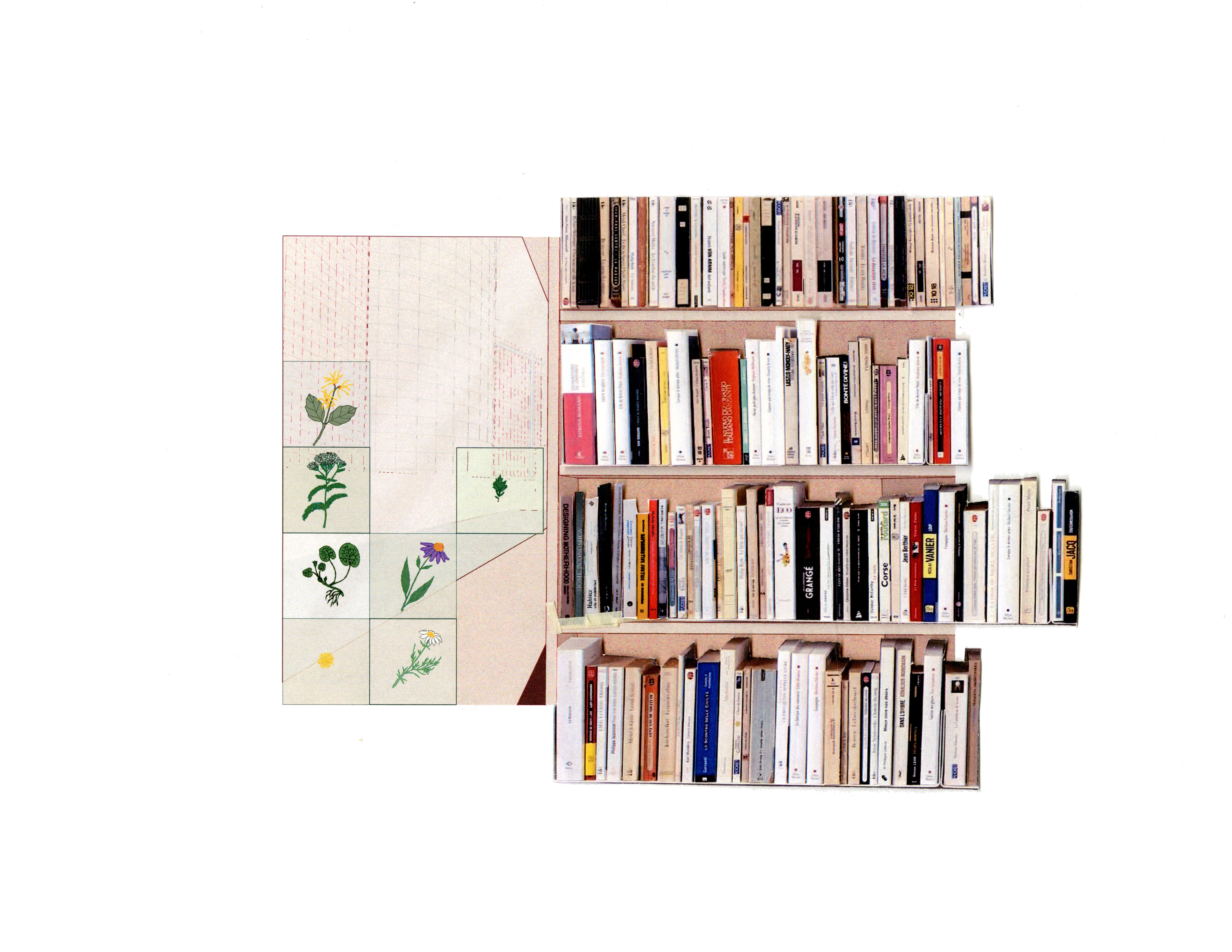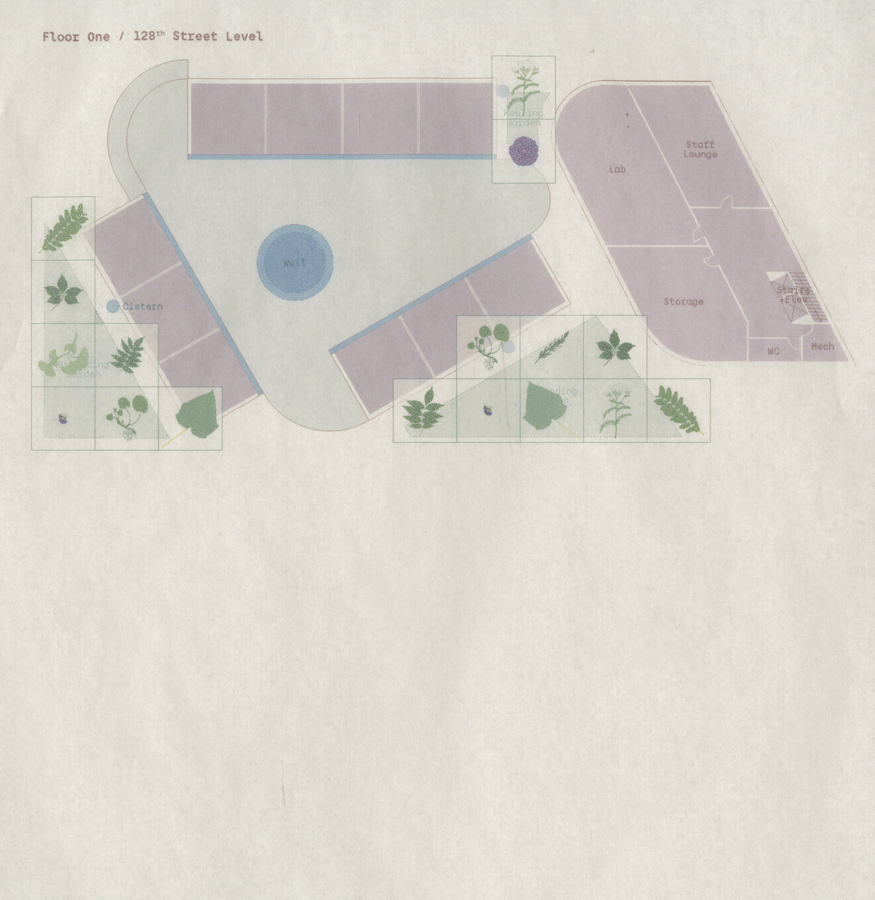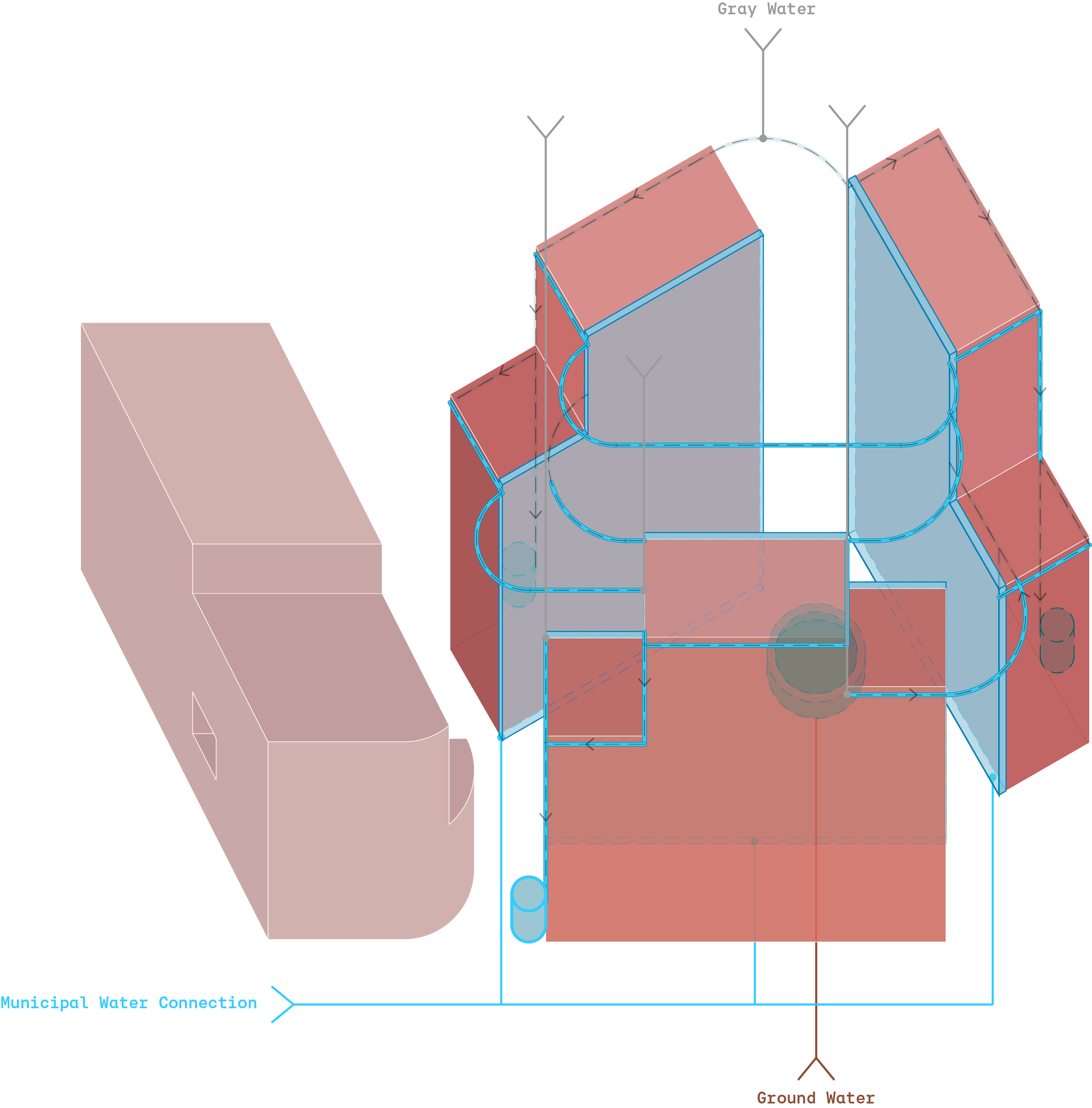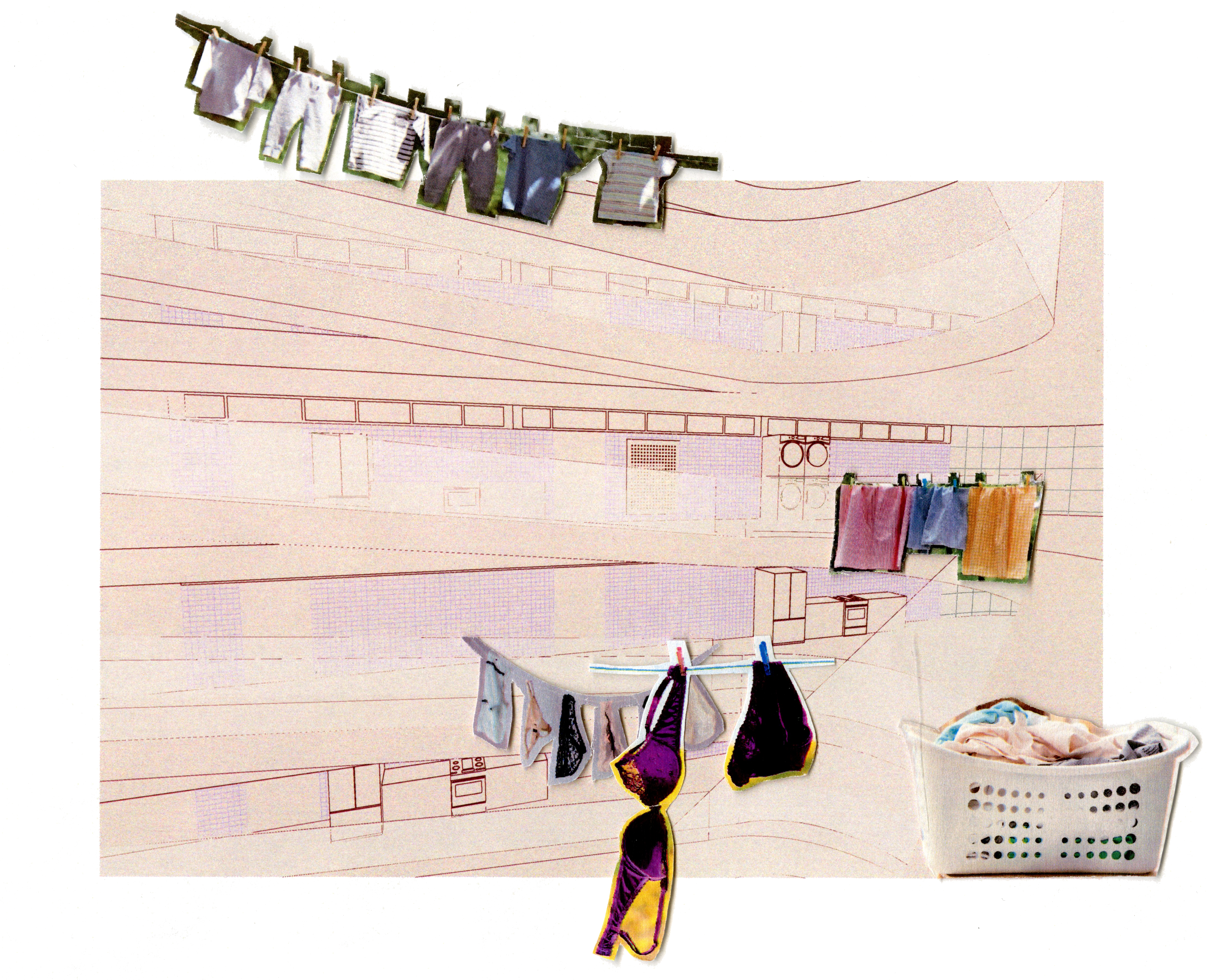Developed collaboratively with Elise Cloutier for States of Housing.
Tile, Tiling, Tilling

The project starts by addressing care at the object scale.



Objects such as sinks, drying racks, toolboxes sparked an interest in domestic labor which forms the core of the project.
As a fundamental infrastructure for acts of care, water became the lifeforce of the project.

Thus, the plumb wall became the dominant in the plan configuration.
It is shared between the unit and hallway, servicing both the private and public. The hallways are imagined as extensions of the units, challenging notions of private property. This reorganisation enables occupants to have access to more, without the economic burden.
![]()
What emerges from this pooling of tangible and intangible resources is commoning.
Commoning is a practice that prioritises the creation and maintenance of social relationships and collaboration over the individual. Commoning enables renewal, sustenance, and reproduction.
Commoning is a practice that prioritises the creation and maintenance of social relationships and collaboration over the individual. Commoning enables renewal, sustenance, and reproduction.



Following this theme of reproduction, our secondary program proposes a Center for Reproductive Justice. Harlem does not have a nearby Planned Parenthood or similar organization‒ the neighbourhood is medically underserved. Especially given the changing political context, it has become so much more pertinent to provide access to sexual health resources. Tying hand-in-hand with reproductive freedom and sexual health, our housing intends to accommodate a wide range of family types.
The unit plan is designed to accommodate different occupant profiles, and changing family sizes. One module can be used as a studio, one and half as a one bedroom, two as a two to three bedroom.

The intentional ambiguity of use and functional indeterminacy of each room as well as fixing the strip of plumb wall to the corridor wall, allows for units to be reconfigured to accommodate growing and shrinking needs for space. Residents can negotiate, reinterpret, and change the spaces as they feel necessary. The flexible configuration also challenges the notions Henry Robert’s model for housing entails and the nuclear family model it propagates.
The architecture of Robert’s model and the relationships it consequently created has been complicit in the concealment of domestic labour. This labour extends beyond maintenance and the servicing of the household and into affective reproductive labour. Typically “feminine” labour is hidden, undervalued, and unwaged. How can we make domestic labour visible, appreciated? How can feminized labour be degendered? How can our architecture nurture these values?



We return to the act of commoning, which underlines a need for stewardship to ensure sustainability. There is a land and labor tie that arises from the design but also a reimagining of care alongside form. We imagine gardeners, live-in contractors, healthcare workers servicing our secondary program as potential occupants of our design.
Individual balconies are excluded in favour of shared terraces and outdoor spaces. Healing, grounding, nurture and sharing gardens are woven through the project.
Individual balconies are excluded in favour of shared terraces and outdoor spaces. Healing, grounding, nurture and sharing gardens are woven through the project.
Gardens are curated based on the plants’ lighting needs; grounding gardens being more shaded.
These green spaces are also intended to support our secondary program, with some serving as recovery gardens, carving out therapeutic spaces where individuals can find solace and healing during their treatment journey.



As some of these plants require regular watering, a water collection system making use of rain and groundwater is also proposed—


With the belief that care is everywhere, that care scripts space, and space scripts care, the project proposes the reconception and celebration of care, the redefining of the social rituals of maintenance, and encourages stewardship through education and commoning.